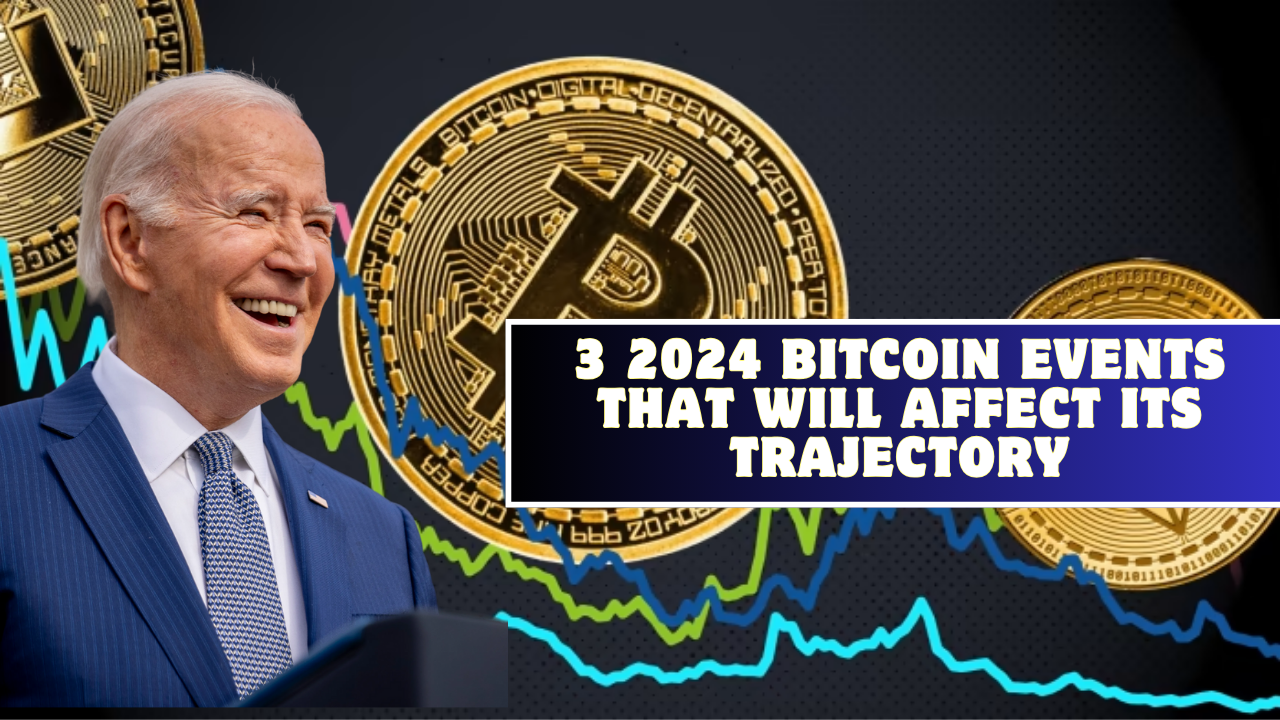If we look across the 15-year history of Bitcoin—CRYPTO: BTC—there are a number of events that, in retrospect, we could say with some surety had a huge bearing on its trajectory. Developments like the creation of the first Bitcoin exchange, such as Mt. Gox, made transactions easier for early Bitcoin pioneers, while the recent approval of spot Bitcoin exchange-traded funds has given the cryptocurrency a new home on Wall Street.
Be sure that many other transformative events are yet to happen. Here are three developments that could happen this year that hold immense potential to add to Bitcoin’s historic journey of price appreciation.

A halving unlike any before takes shape.
The fourth halving will happen about mid-April. Halving is a process hardwired into Bitcoin’s code that reduces its supply growth rate in half approximately every four years. Today, it stands at around 1.75%, but after the next halving passes, that will drop below 1% to around 0.8%.
Historically, this halving has acted as one of the biggest catalysts for price appreciation. Cutting supply growth makes it so that even in the case of constant demand, prices would just have to increase to adjust to the diminished number of new Bitcoins. On average, Bitcoin’s price increases by around 125% within a year after a halving occurs.
Unlike others, this halving, by character, does not guarantee any future performances. That is because, for the first time ever in history, Bitcoin now has a new buyer in the form of Wall Street’s biggest names.
Following the approval of Bitcoin ETFs, firms such as BlackRock and Fidelity have started accumulating bitcoins at a record pace. These new ETF sponsors already hold close to 4% of the total Bitcoin supply.
While in the past, during halvings, Bitcoin’s primary buyers were retail investors, the institutions buying Bitcoin now have a lot deeper pockets with more available capital. Should their rate of accumulation not slow, this halving could be explosive—considering the number of bitcoins available to buy on exchanges is at its lowest since 2018. With an already existing supply squeeze, the halving will ratchet up the pressure on Bitcoin and could well be the catalyst for a price jump of historic proportion.

Embracing the Bitcoin standard
Over the last bull run of the cryptos, we had a couple of announcements of companies buying Bitcoins. One of them was MicroStrategy NASDAQ: MSTR, which is a Business Software Company that’s rebranding to be a Bitcoin development company.
Since 2020, MicroStrategy and former Chief Executive Officer Michael Saylor have accumulated more than 205,000 bitcoins—nearly 1% of all the Bitcoin that ever will be minted. According to Saylor, in a weak dollar, along with all the properties to which Bitcoin becomes compared to make it just a superior asset, it makes way for what he has dubbed the “Bitcoin standard.”
FAQs
1. What are the three major events that could affect Bitcoin’s price trajectory in 2024?
The three key events to watch for are:
- Bitcoin Halving: Expected in April 2024, this event will reduce the reward for mining new blocks by half, reducing the supply of new Bitcoin entering circulation.
- Regulatory Changes: Ongoing regulatory decisions, including new rules from governments and global financial institutions, could significantly impact Bitcoin’s price by either encouraging or deterring institutional and retail investment.
- Institutional Adoption and ETFs: The approval or expansion of Bitcoin Exchange-Traded Funds (ETFs), especially in the U.S., could drive large-scale institutional investment, affecting market dynamics.
2. How does Bitcoin halving affect its price?
Historically, Bitcoin halving events have led to significant price increases due to the reduced supply of new Bitcoin entering the market. With the reward cut in half, scarcity increases, potentially driving demand and prices higher.
3. What kind of regulatory changes could affect Bitcoin in 2024?
New regulations could include stricter Know Your Customer (KYC) and Anti-Money Laundering (AML) rules, taxation policies, or outright bans in certain regions. Conversely, favorable regulations, such as the approval of Bitcoin ETFs or clearer guidelines, could promote broader adoption.
4. Why is institutional adoption important for Bitcoin’s price trajectory?
Institutional adoption brings large sums of capital into the Bitcoin market, providing liquidity and increasing demand. The approval of more Bitcoin ETFs and other institutional financial products in 2024 could trigger significant price growth by attracting traditional investors.
5. What risks could regulatory changes pose to Bitcoin?
Unfavorable regulations, such as harsher tax treatment, bans on Bitcoin mining, or restrictions on its use, could reduce market confidence and lead to price declines. Regulatory crackdowns in major economies could suppress Bitcoin’s trajectory.

